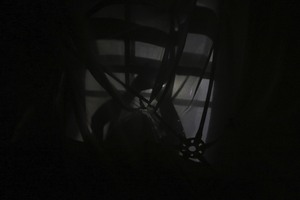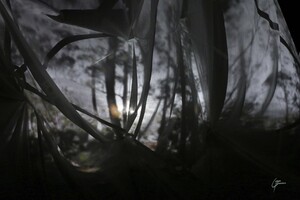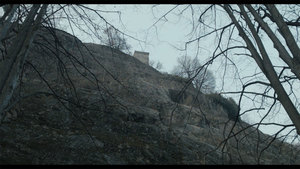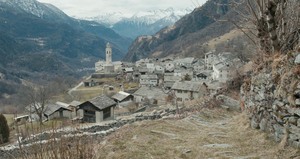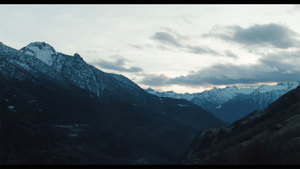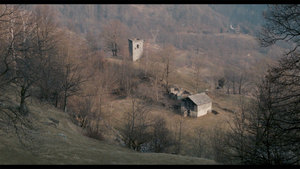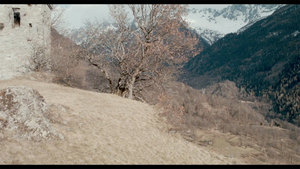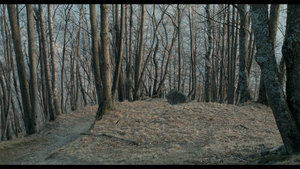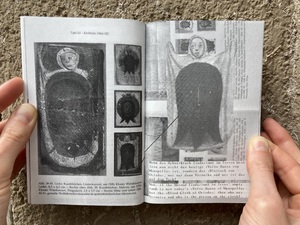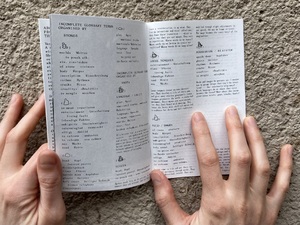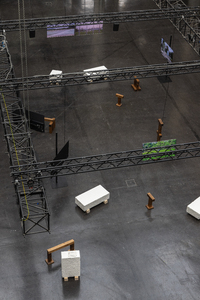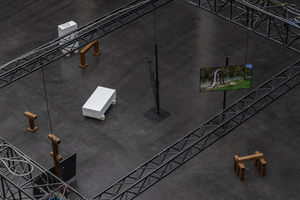"Diplomarbeit"
| Begriff | Diplomarbeit |
| Metakey | Typ der Abschlussarbeit (institution:graduation-project-type) |
| Typ | Keyword |
| Vokabular | HfG |
1327 Inhalte
- Seite 1 von 111
ERLEBNIS THEATER: Ausstellungsansicht
- Titel
- ERLEBNIS THEATER: Ausstellungsansicht
- Autor/in
- Kategorie
- Schlagworte
- Datierung
- Mai 2021
- Ort: Institution
- Ort
- Großes Studio
- Stadt
- Land
- Titel
- ERLEBNIS THEATER: Ausstellungsansicht
- Titel (en)
- ERLEBNIS THEATER: exhibition view
- Urheberrechtshinweis
- © Carina Fenderich
- Rechtsschutz/Lizenz
- Freigabe Nutzung HfG
- Medienersteller/in
- Beziehung/Funktion
- Projektleiter/in
- Semester
- Studiengang
- Typ der Abschlussarbeit
- Importiert am
- 14.06.2024
- Übergeordnete Sets
- 1
ERLEBNIS THEATER: Ausstellungsansicht
- Titel
- ERLEBNIS THEATER: Ausstellungsansicht
- Autor/in
- Kategorie
- Schlagworte
- Datierung
- Mai 2021
- Ort: Institution
- Ort
- Großes Studio
- Stadt
- Land
- Titel
- ERLEBNIS THEATER: Ausstellungsansicht
- Titel (en)
- ERLEBNIS THEATER: exhibition view
- Urheberrechtshinweis
- © Carina Fenderich
- Rechtsschutz/Lizenz
- Freigabe Nutzung HfG
- Medienersteller/in
- Beziehung/Funktion
- Projektleiter/in
- Semester
- Studiengang
- Typ der Abschlussarbeit
- Importiert am
- 14.06.2024
- Übergeordnete Sets
- 1
Etwas bleibt
- Titel
- Etwas bleibt
- Autor/in
- Kategorie
- Schlagworte
- Titel
- Etwas bleibt
- Urheberrechtshinweis
- © Elenya Bannert
- Rechtsschutz/Lizenz
- Freigabe Nutzung HfG
- Medienersteller/in
- Beziehung/Funktion
- Projektleiter/in
- Semester
- Studiengang
- Typ der Abschlussarbeit
- Importiert am
- 20.07.2018
- Übergeordnete Sets
- 0
Etwas bleibt
- Titel
- Etwas bleibt
- Autor/in
- Schlagworte
- Datierung
- 2017
- Titel
- Etwas bleibt
- Titel (en)
- What Remains
- Urheberrechtshinweis
- © Elenya Bannert
- Rechtsschutz/Lizenz
- Freigabe Nutzung HfG
- Medienersteller/in
- Beziehung/Funktion
- Alternativ-Text (de)
- Filmstill mit Gebäuden im ländlichen Raum
- Alternativ-Text (en)
- Film still featuring buildings in a rural setting
- Projektleiter/in
- Semester
- Studiengang
- Typ der Abschlussarbeit
- Importiert am
- 19.02.2025
- Übergeordnete Sets
- 0
Etwas bleibt
- Titel
- Etwas bleibt
- Autor/in
- Kategorie
- Schlagworte
- Titel
- Etwas bleibt
- Urheberrechtshinweis
- © Elenya Bannert
- Rechtsschutz/Lizenz
- Freigabe Nutzung HfG
- Medienersteller/in
- Beziehung/Funktion
- Projektleiter/in
- Semester
- Studiengang
- Typ der Abschlussarbeit
- Importiert am
- 20.07.2018
- Übergeordnete Sets
- 0
Etwas bleibt
- Titel
- Etwas bleibt
- Autor/in
- Kategorie
- Schlagworte
- Titel
- Etwas bleibt
- Urheberrechtshinweis
- © Elenya Bannert
- Rechtsschutz/Lizenz
- Freigabe Nutzung HfG
- Medienersteller/in
- Beziehung/Funktion
- Projektleiter/in
- Semester
- Studiengang
- Typ der Abschlussarbeit
- Importiert am
- 20.07.2018
- Übergeordnete Sets
- 0
Etwas bleibt
- Titel
- Etwas bleibt
- Autor/in
- Kategorie
- Schlagworte
- Titel
- Etwas bleibt
- Urheberrechtshinweis
- © Elenya Bannert
- Rechtsschutz/Lizenz
- Freigabe Nutzung HfG
- Medienersteller/in
- Beziehung/Funktion
- Projektleiter/in
- Semester
- Studiengang
- Typ der Abschlussarbeit
- Importiert am
- 20.07.2018
- Übergeordnete Sets
- 0
Etwas bleibt
- Titel
- Etwas bleibt
- Autor/in
- Kategorie
- Schlagworte
- Titel
- Etwas bleibt
- Urheberrechtshinweis
- © Elenya Bannert
- Rechtsschutz/Lizenz
- Freigabe Nutzung HfG
- Medienersteller/in
- Beziehung/Funktion
- Projektleiter/in
- Semester
- Studiengang
- Typ der Abschlussarbeit
- Importiert am
- 20.07.2018
- Übergeordnete Sets
- 0
everyone (dt.: alle)
- Titel
- everyone (dt.: alle)
- Schlagworte
- Titel
- everyone (dt.: alle)
- Titel (en)
- everyone
- Urheberrechtshinweis
- © Hanna Franke
- Rechtsschutz/Lizenz
- Freigabe Nutzung HfG
- Medienersteller/in
- Beziehung/Funktion
- Medien-Beschreibung
- Doppelseite des Readers zu „I used to think that I was made of Stone“.
(„everyone“, 9,5 x 15,2 cm, 36 Seiten)
- Doppelseite des Readers zu „I used to think that I was made of Stone“.
- Medien-Beschreibung (en)
- Double-page spread of the accompanying reader for “I used to think that I was made of Stone”.
(“everyone”, 9,5 x 15,2 cm, 36 pages)
- Double-page spread of the accompanying reader for “I used to think that I was made of Stone”.
- Alternativ-Text (de)
- Zwei Hände halten ein Heft vor eine Wand. Es zeigt mehrere Abbildungen in schwarz-weiß. Variationen einer Figur mit einem großen hellen Gewand, auf dem ein Gesicht abgebildet ist. Auf der rechten Seite steht unter dem vergößerten Bild der Text: "Wenn das Schweißtuch (sudarium) im leeren Grab Jesu nun nicht das heutige 'Volto Santo von Manopello' ist, sondern das 'Bluttuch von Oviedo', wer war dann Veronika und wer ist das auf dem Tuch?" auf Englisch und Deutsch.
- Alternativ-Text (en)
- Two hands holding a booklet in front of a wall. It shows several illustrations in black and white. Variations of a figure with a large light-colored robe on which a face is depicted. On the right-hand side under the enlarged image stands the text: “Now, If the Shroud (sudarium) in Jesus‘ empty tomb is not today's ’Volto Santo of Manopello‘, but the ’Blood Cloth of Oviedo', then who was Veronica and who is the person on the cloth?” in German and English.
- Projektleiter/in
- Semester
- Studiengang
- Typ der Abschlussarbeit
- Importiert am
- 15.11.2024
- Übergeordnete Sets
- 1
everyone (dt.: alle)
- Titel
- everyone (dt.: alle)
- Schlagworte
- Titel
- everyone (dt.: alle)
- Titel (en)
- everyone
- Urheberrechtshinweis
- © Hanna Franke
- Rechtsschutz/Lizenz
- Freigabe Nutzung HfG
- Medienersteller/in
- Beziehung/Funktion
- Medien-Beschreibung
- Doppelseite des Readers zu „I used to think that I was made of Stone“.
(„everyone“, 9,5 x 15,2 cm, 36 Seiten)
- Doppelseite des Readers zu „I used to think that I was made of Stone“.
- Medien-Beschreibung (en)
- Double-page spread of the accompanying reader for “I used to think that I was made of Stone”.
(“everyone”, 9,5 x 15,2 cm, 36 pages)
- Double-page spread of the accompanying reader for “I used to think that I was made of Stone”.
- Alternativ-Text (de)
- Übersicht verschiedener Worte, kurzer Texte und Symbole. Die deutsche Übersetzung der Überschrift lautet: „Unvollständige Glossarbegriffe, sortiert nach Steinen“.
- Alternativ-Text (en)
- Overview of words, several short texts and signs. The heading says: “Incomplete Glossary Terms organised by stones”.
- Projektleiter/in
- Semester
- Studiengang
- Typ der Abschlussarbeit
- Importiert am
- 15.11.2024
- Übergeordnete Sets
- 1
exhibition view
- Titel
- exhibition view
- Autor/in
- Schlagworte
- Datierung
- 24.10.2024 - 29.10.2024
- Titel
- exhibition view
- Titel (en)
- exhibition view
- Urheberrechtshinweis
- © Lukas Klein
- Rechtsschutz/Lizenz
- Freigabe Nutzung HfG
- Medienersteller/in
- Beziehung/Funktion
- Medien-Beschreibung
- Austellung im Lichthof 3
- Medien-Beschreibung (en)
- Exhibition in Lichthof 3
- Projektleiter/in
- Semester
- Studiengang
- Typ der Abschlussarbeit
- Importiert am
- 03.11.2024
- Übergeordnete Sets
- 1
exhibition view 2
- Titel
- exhibition view 2
- Autor/in
- Schlagworte
- Datierung
- 24.10.2024 - 29.10.2024
- Titel
- exhibition view 2
- Titel (en)
- exhibition view 2
- Urheberrechtshinweis
- © Lukas Klein
- Rechtsschutz/Lizenz
- Freigabe Nutzung HfG
- Medienersteller/in
- Beziehung/Funktion
- Projektleiter/in
- Semester
- Studiengang
- Typ der Abschlussarbeit
- Importiert am
- 03.11.2024
- Übergeordnete Sets
- 1
